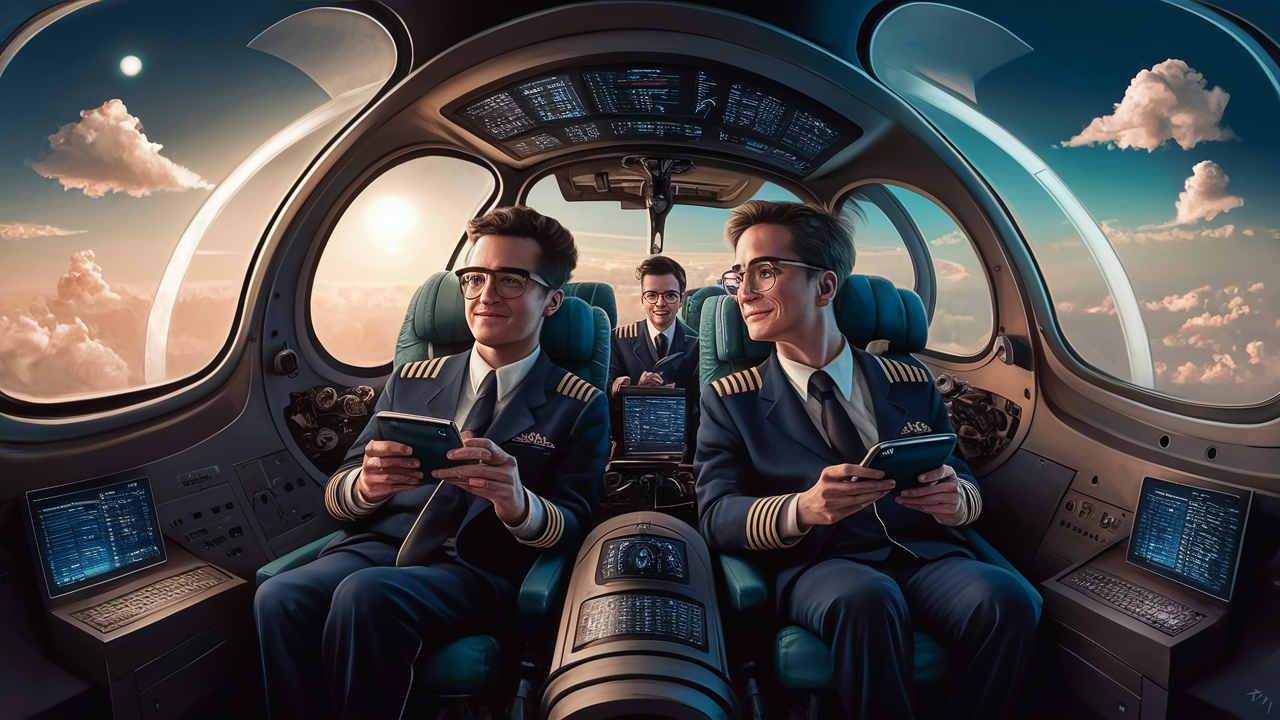Can pilots use Internet?

While flying, can pilots make use of the internet?
Aviation: It is still a subject of intense debate whether or not pilots should get internet access while flying. But as most pilots carry electronic flight bags (EFBs) these days, electronic devices that replace many of the paper documents pilots used to carry on the flight, inflight internet could be very handy. However, the problem of distraction, security threats, and interaction with the aircraft control system has made it rather contentious.
This section focuses on the current rules that regulate the situation where a home team invites a guest team to its stadium, paying it a handsome amount of money to entertain the home fans.
Current FAA rules that have been put in place do not allow pilots to use personal wireless devices, including cell phones and laptops, for personal activities like sending emails or browsing the internet during the final phase of a flight that is below 10,000 feet. On internet use, company policies are also set by the airlines to regulate internet usage. Internet connectivity is allowed during the cruise as long as the plane has WiFi connectivity during the flight.
Today, many airlines flying the skies do have WiFi systems installed for the passengers but not for the cockpit or pilot's tablets/EFB. On cockpit connectivity, it is reported that some of the global airlines, such as Lufthansa and Emirates, have started testing it. This leads to access to the real-time condition of the weather, forecasting, and other data relevant to the optimization of the flight.
Consumer-grade tablets and EFB apps employed by lesser civil aviation, business aviation, and light general aviation pilots do not support internet connectivity while flying. This is because of issues of security, tampering with signals that are vital in the operations of aircraft, and the fact that pilots can be distracted.
Arguments For Allowing Access
There are some strong arguments supporting inflight Internet for pilots:
1. Current weather and airport advisories enhance situational awareness, decision-making, and safety by a substantial notch. This is especially crucial where there are likely to be holds, diversions, or any other unpredictable circumstances that may arise.
2. The fact that pilots are directly in touch with the airline dispatch, maintenance control, and operational centers enables them to get the best recommendations inflight from the company. This can help in resolving abnormal issues more quickly.
3. It is evident that the ability to access the Internet allows for improved scheduling and planning of fuel use and calculations of time and efficiency. Delays in weather or airports that are captured online early help to reduce surprises.
4. In terms of security, some minor issues, such as people interfering with the data or hacking, can be dealt with through appropriate firewalls and structures put in place. Required connections: secured VPN connection.
5. The younger generations that are being trained as new pilots have been born and raised in an environment with virtually free-flowing internet and information. This means that if there is no inflight internet connectivity then it can affect their operation.
Arguments Against Allowing Access
On the other hand, there are a few strong counterpoints from opponents of inflight internet for pilots:
1. It can be explained that the first and foremost problem with the usage of these technologies in the classroom is that they can distract students. If pilots are reading email, texts, or surfing on the internet, they have their heads down looking at the screen and not at the skies or the instrument dials. This raises safety issues.
2. Popular consumer tablets/iPads can not afford aviation-grade reliability or security in-flight against interference, black-out, or cyber threats. What about connectivity breakdown during some of these phases?
3. Problems associated with the cost for connectivity and integration of technological solutions, encompassing installation, maintenance, and protection of internet connections in the cockpit may also translate to increased costs for airlines regarding fleets. But surely given these thin profit margins can they afford this?
4. This is a point that many experienced pilots will now dispute because early aviation did not have inflight connectivity. Adequate pre-flight preparation and appropriate onboard equipment shall be sufficient for receptions even if the Internet connection is unavailable. Experience pilots lack the Information management skills needed by the new generation of pilots.
5. Giving the go-ahead implies more fights over which websites or content is fit for pilots to access while in flight just like the passenger internet fight. More policy complexities.
Significance of Inflight Connectivity As it is known to all, Inflight Connectivity is the Future.
While there remain issues on both sides of the equation, the longer-term trend is undoubtedly one of greater information availability when inflight for pilots and airlines. Since WiFi is standard for passengers, it can only be expected that cockpit limitations will also be lifted soon. All sorts of security-related problems as well as issues with interference and distraction should be addressed through the implementation of necessary protections and training.
The flight dispatchers are also strong advocates for the cockpit internet while in flight due to safety, efficiency, and real-time advantages. Some think that the gains outweigh the risks, especially when new operations are starting with new generations of aircraft and tablets that have the right hardware and software.
Finally, inflight connectivity for pilots, as well as other technologies, is manageable provided that it is implemented reasonably. However, the management of distractions and internet misuse can be solved through advanced data protections, training that discourages distractions, and rules against the wrong usage of the internet, hence making the access to the internet a powerful tool for aviation.
Call us at (833) 902-2090 to secure the best deals on flight tickets today. Don't miss out on unbeatable prices for your next adventure!
